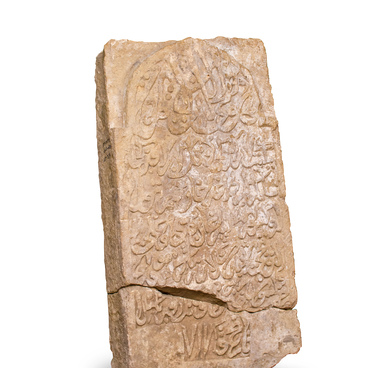Volga Bulgaria existed in the 10-13 centuries and was a developed state. It was located in the Middle Volga region and the Kama basin. The Bulgars built several big cities that kept pace with European and Asian centers. The system of cities made it possible to safely transport goods around the country — in their vicinity no caravans were attacked.
Cargo was also protected with seals. According to some reports, containers with goods were first sealed in Volga Bulgaria. Then this experience was adopted by different uluses (parts) of the Golden Horde and Russian principalities. Seals were hung on goods that were transported along the Volga.
A stamp, or seal, was a small cylinder of two halves, they were connected by a special insert — a pin. There was a small hole in the middle, probably a cord passed through it to attach the seal to the cargo. In the center of the end planes, a fastening wedge was sometimes inserted — it pierced the knot on the cord, and because of this, it was impossible to remove the seal without damaging the rope or seal. This ensured the safety of the cargo transported by the merchants.
Each merchant had his seal, with a special design. Archaeologists have found seals with relief images of a lion, birds, and mythical creatures. One of the most popular motifs is a lion or a sphinx in a prayer pose. They have large claws, a tail decorated with a palm leaf, and a large head. Some historians believe that the image could have been copied by the Bulgars both from the masters from Iran and the Caucasus, and the craftsmen of Western Europe and Russia. However, this version has not yet been confirmed: no similar finds have been found in these territories.
Sometimes, to save metal, only planes with a relief image were made of bronze, the rest was made of lead or wax.
An example from the collection of the Bolgar Museum-Reserve has a lion figurine on one side. Its head is turned in full face, and the end of the tail is crowned with palmette. Palmette is an element of plant ornament in the form of a palm tree leaf. On the other side, the seal is decorated with images of two birds, located with their backs to each other. Both figures are accompanied by a belt with frequent strokes.
Cargo was also protected with seals. According to some reports, containers with goods were first sealed in Volga Bulgaria. Then this experience was adopted by different uluses (parts) of the Golden Horde and Russian principalities. Seals were hung on goods that were transported along the Volga.
A stamp, or seal, was a small cylinder of two halves, they were connected by a special insert — a pin. There was a small hole in the middle, probably a cord passed through it to attach the seal to the cargo. In the center of the end planes, a fastening wedge was sometimes inserted — it pierced the knot on the cord, and because of this, it was impossible to remove the seal without damaging the rope or seal. This ensured the safety of the cargo transported by the merchants.
Each merchant had his seal, with a special design. Archaeologists have found seals with relief images of a lion, birds, and mythical creatures. One of the most popular motifs is a lion or a sphinx in a prayer pose. They have large claws, a tail decorated with a palm leaf, and a large head. Some historians believe that the image could have been copied by the Bulgars both from the masters from Iran and the Caucasus, and the craftsmen of Western Europe and Russia. However, this version has not yet been confirmed: no similar finds have been found in these territories.
Sometimes, to save metal, only planes with a relief image were made of bronze, the rest was made of lead or wax.
An example from the collection of the Bolgar Museum-Reserve has a lion figurine on one side. Its head is turned in full face, and the end of the tail is crowned with palmette. Palmette is an element of plant ornament in the form of a palm tree leaf. On the other side, the seal is decorated with images of two birds, located with their backs to each other. Both figures are accompanied by a belt with frequent strokes.

